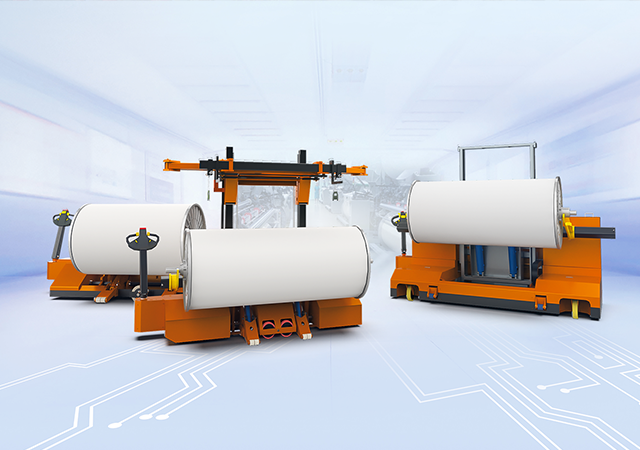Textile automation represents a pivotal transformation in the industry, offering a substantial boost in quality and productivity for human endeavors. The strategic investment in cutting-edge machinery and technology has emerged as an imperative to circumvent breakdowns and curtail costs.
But what exactly is textile automation?
Textile automation empowers human activities by employing machines to elevate industrial productivity. This shift from manual labor towards automation optimizes processes, mitigates errors, and unlocks new realms of efficiency.
Automation, in its fullest form, needs to permeate every facet of the production chain within any industry. In the world of textiles, automation finds its place in finishing, manufacturing, printing, weaving, and dyeing processes. The overarching objective is to bolster an enterprise's productivity, enhance its competitive edge, and establish a dominant presence in the market.
Smart machines, sophisticated software, and advanced programs collaborate harmoniously to execute tasks with greater efficiency and rapidity. This seamless integration of technology accelerates the production cycle and augments the performance of professionals.
Furthermore, the modernization brought about by automation significantly contributes to quality control and safety. It optimizes industrial economics by minimizing errors, reducing rework, and curbing wastage.
This evolution finds its roots in Industry 4.0, where technology, robots, and machinery converge to streamline production and bolster quality. In this era, devices interconnect to create an expansive information network, propelling the quest for superior outcomes.
In essence, automation seamlessly intertwines with industrial processes. Even as we contemplate the advent of Industry 5.0, automation and technological advancement remain central to the next generation of industry. What evolves is the dynamic between humans and machines and our capacity to adapt to this evolving relationship.
Impact on the Textile Industry
The embrace of automation within the textile sector results in more agile and dynamic production lines, geared toward cost reduction in operations and development. Furthermore, automated machinery, when deployed within smart textile factories, yields results that are highly repeatable and consistent.

Industrial automation investments have the power to eliminate quality control issues stemming from human errors. By meticulously regulating and overseeing processes, industrial automation ensures a consistently high-quality final product.
Even in the event of human errors, automated systems exhibit a remarkable ability to prevent them. Machine technology diminishes the chances of accidents and defects. An astute analysis of industrial automation underscores how businesses adopting this concept can enhance their competitiveness:
Personnel costs are diminished through machine automation and streamlined company control. However, investment is required for automation and enhancing the quality of personnel. Product quality is improved, as machines exhibit greater precision than humans, ensuring stable quality. Inventory costs are reduced as productivity rises, reducing the need for large inventories. Waste in the form of discarded products is minimized.
The time required for designing and manufacturing new products is optimized, thanks to programmable machines capable of performing diverse operations. Adaptations to products can be executed more swiftly. Responsiveness to market demands and fluctuations is heightened.
In conclusion, to modernize the textile industry, elevate productivity, and bolster competitiveness, the integration of technology and automated machinery is not merely advantageous—it is indispensable.
Below, we present five applications of textile automation:
Department Integration and Data Synthesis
Textile automation should permeate all departments and the entire production chain. Management software facilitates team integration, promoting efficient data sharing. Smart machines contribute to data generation, with many equipped to indicate ideal maintenance times, productivity benchmarks, and other metrics. The integration of machines through IoT offers a comprehensive view, enabling the development of productivity-boosting strategies. This abundance of data fosters the emergence of valuable insights and aids in identifying flaws to prevent errors in subsequent stages. Consider utilizing ERP systems or Supervisory Control and Data Acquisition (SCADA) for comprehensive data monitoring and control.
Inventory Monitoring and Material Control:
Automation extends to inventory management with specialized software systems, eliminating manual tasks and enhancing confidence in material control. These systems automate activities like receiving, storing, inspecting, moving, transporting, and document issuance, providing real-time inventory tracking. In-depth analysis of data allows for better organization and structuring of the sector.
Automated Forming, Cutting, and Drying Systems:
Automated machines reduce waste, production costs, and material usage while facilitating defect identification. Computer-Aided Manufacturing (CAM) guides machines through code, offering precise instructions for part production. A Manufacturing Execution System (MES) and Manufacturing Operations Management (MOM) systems can also be employed to control production and ensure quality.
Sample Analysis and Sorting Stage:
Automation extends to packaging with automatic machines that reduce plastic usage and enhance sustainability. Quality checks become more efficient with automated proofreaders, collecting data and guiding precise cuts to prevent defects in the final product. Textile automation also applies to processes like knitting relaxation, trimming, and collar counting, all contributing to heightened productivity and improved financial health.
SUNTECH textile machinery, since 1970, has gained extensive experience in providing textile machinery automation solutions. We specialized in textile finishing machines and material handling equipment, especially for the AI Intelligent Fabric Inspection System SThinkor and the eco-friendly Motorized Beam Trolley Series STelego. Today, we offer a new possibility for modern textile mills globally, a highly automated, and sustainable solution.




